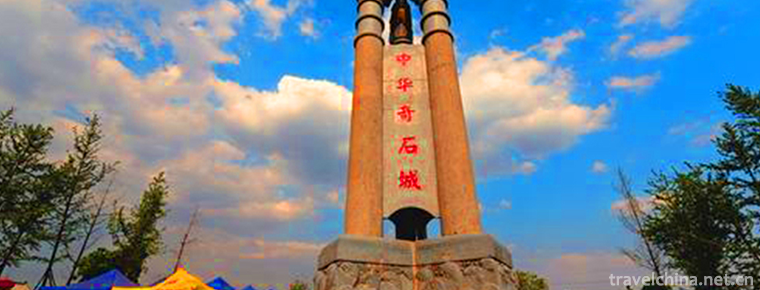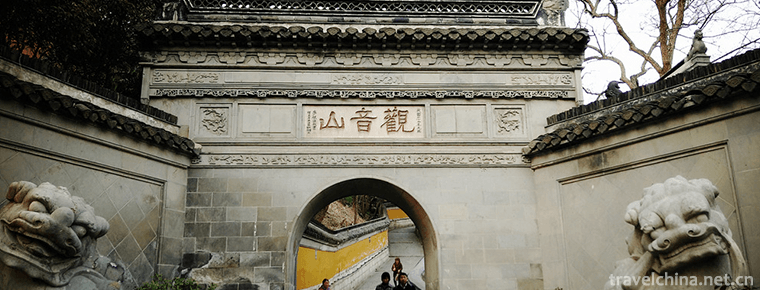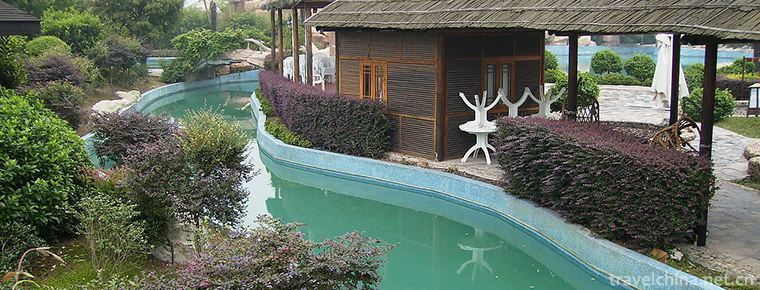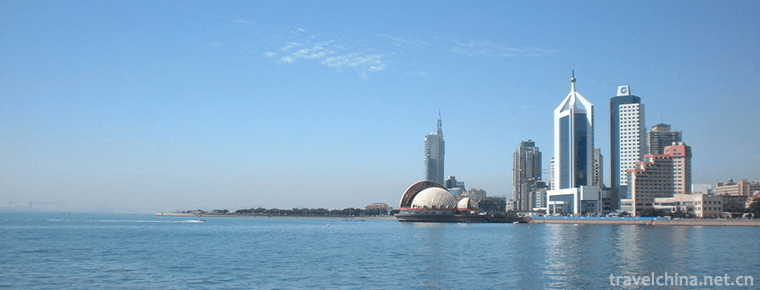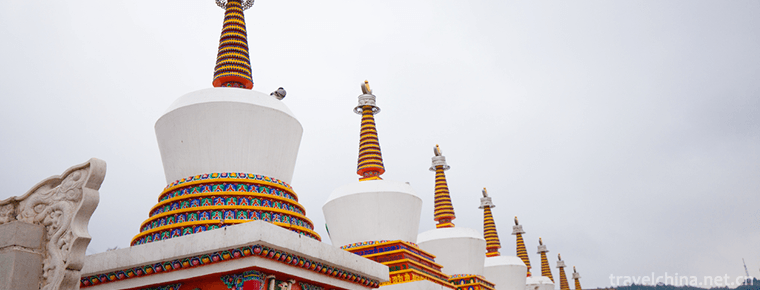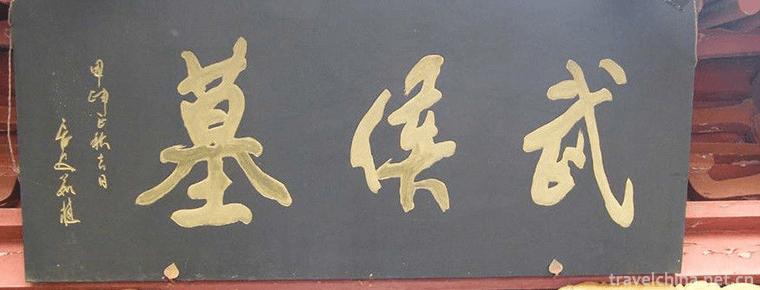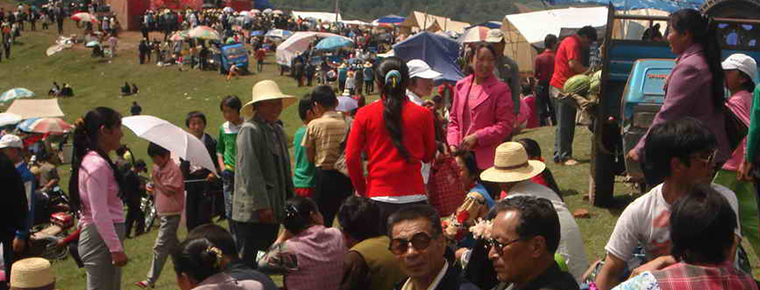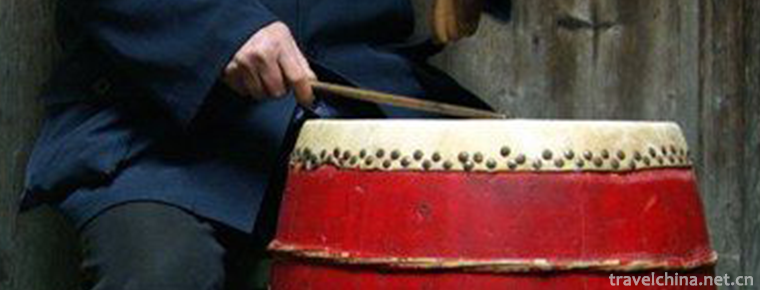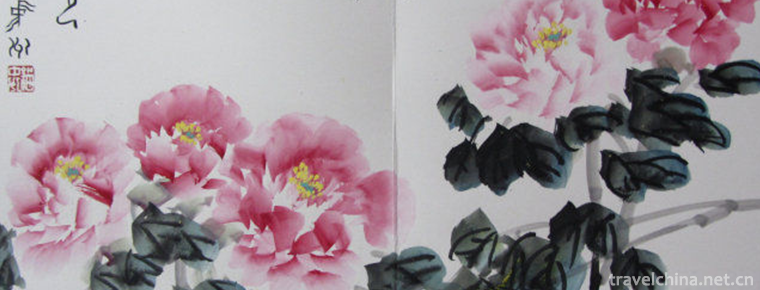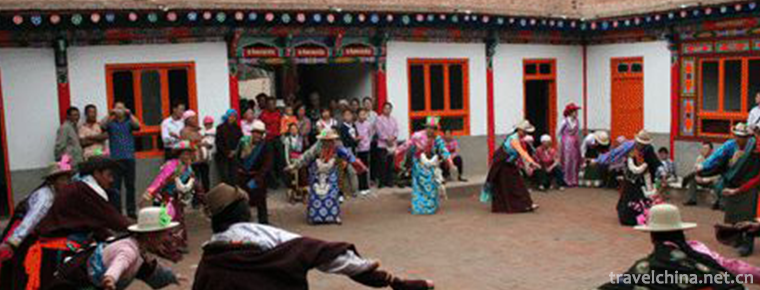Shengzhong Lake Scenic Area
Shengzhong Lake Scenic Spot: The largest artificial lake in southwest China, Shengzhong Lake, is located in Shengzhong Lake Scenic Spot of National AAAA Tourist Area in Southern County of Sichuan Province. It has 1.3 billion cubic meters of lake reservoir capacity, more than 80,000 mu of smoke, 80 kilometers of main waterway still water, beautiful scenery, Green Island chess, water and clear fish fertilizer, and more than 40 kinds of rare fish, such as red tail, warped mouth and silver fish, which are well-known. China's leisure paradise, experience resort, fishing paradise.
development history
Fishing Paradise-Shengzhong Lake
In 2009, the first China Shengzhong Lake Fishing Grand Prix opened here. It is the largest wild fishing event in China so far, with the largest number of participants and the highest prize. It was awarded "the largest wild fishing competition" by the headquarters of Shanghai World Guinness and won the best project award of Guinness. Under the guidance of the State General Administration of Sports, Shengzhong Lake, relying on its natural water advantages, has become the only natural competition venue in China that can hold national and world-class pool fishing, wild fishing and Luya fishing competitions at the same time. In 2010, Shengzhong Lake was designated as the "Fishing Competition Training Base" by the State Sports Administration, and the southern county was officially named "National Fishing City" by the State Sports Administration for the first time.
Shengzhong Lake, a leisure resort
"China Shengzhong Lake World Fishing City". The Shengzhong Lake Fishing Culture Festival, the Weifang International Kite Festival in Shandong Province and the Qinghai Lake Cycling Race are also known as the "Three National Leisure Sports Culture Festivals". Ecological parking lot, aquatic sports center, Mermaid wharf, six international standard fishing pools, 15 km around the lake highway, agricultural museum, China Fishing Culture Museum and other dozens of large-scale infrastructure have been built one after another, creating more than 10 core attractions, the cultural connotation and carrying capacity of scenic spots have been enhanced, becoming an important node of tourism experience in Sichuan.
Innovation and Development: Shengzhong Lake
Shengzhong Lake has achieved a perfect transformation from poverty alleviation and development to tourism development relying on sports events. Eighty-five departments, enterprises and institutions in southern county have implemented counterpart assistance to 95 fishing households in accordance with the standards, focusing on improving service facilities such as dining, accommodation and entertainment, so as to integrate sports, tourism and poverty alleviation and development organically; starting poverty alleviation experience tourism and fishing vacation self-driving tour in the reservoir area, 360 fishing spots have been built, reaching the capacity of receiving more than 5,000 people a day. Up to now, the Shengzhong Lake scenic spot has formed a tourism industry system which integrates leisure fishing, sightseeing and catering tourism. The county's tourism industry has developed vigorously, and has found a new way of tourism development with unique southern characteristics.
Important landscape
Reservoir dam
The maximum dam is 79 meters high, 350 meters long and 12 meters wide. It can accommodate four trucks running side by side. The whole dam has a unique architectural style, magnificent momentum and spectacular.
Green Island
Planning in the middle of the reservoir area more than 200 acres of archipelago to build exotic garden, various types of holiday cottages, luxury villas, water park, lakeside bath and other facilities, and the existing fruit Park into one.
Brick tower of Shen Ba
Built in 1864, 14 meters high, it is a seven-storey hexagonal wood-like relief brick tower. It has a peculiar artistic style. There are 207 figures with strong national flavor and relief sculptures such as piano, sword, book and chess. The sculpture skill is superb and the shape is exquisite.
Li Fengguan and the Tomb of the Empress
The Tomb of the empress is the tomb of Luo Shi, the wife of Li Te in Shuhan Dynasty. In the late years of Emperor Jinghui, Li Te led 300,000 uprisings of hungry people. His son Li Xiong officially named Chengdu Emperor in 306 A.D., named Roche Empress Dowager, and his father Li Te King. After Roche's death, he was buried in Fengfeng, his hometown, and renamed "Li Feng". In 1307, a temple named Fengfeng Guan, also known as Li Fengguan, was built on the enclosure of Roche's tomb. It still exists today.
Revolutionary Memorial
On November 25, 1932, the Sichuan Provincial Committee of the Communist Party of China and the Nanchong Central County Committee led the armed uprising of peasants in Shengzhong and Baocheng, which shocked the whole of Sichuan and built a memorial site for the uprising of Tiefu Temple. There are still "Debanxian Soviet" ruins established when the Red Army went north in 1935. Shengzhong Scenic Area is welcoming visitors from all over the world with a brand-new beauty.
Red Army Cave in Longwei Mountain and Tombs of Revolutionary Martyrs
Xihe Township has the Red Army Cave in Longwei Mountain and the tombs of revolutionary martyrs.
Ya Site of Guxishui County in Baocheng and Rural Areas
In 1283, Xishui County and Xinjing County merged into the southern county together. It has a history of more than 1400 years. In 1231, the Mongol Army launched an aggressive war against the Southern Song Dynasty with a strong offensive. When the Mongol Army invaded Xishui County, the people of Xishui responded to the imperial decree of "abandoning the flat land and building mountain stockades", set up stockades to build cities, rose up resistance, defeated dozens of attacks by the Mongol Army, and achieved city pool protection. Victory in the defensive war.
Later, in order to commemorate the city pool defense battle, people named the city pool "Baocheng". In the three years of Yongzheng in Qing Dynasty, the "Houzu Temple" was built on the ruins of Ya in Xishui County. Although it has gone through more than 400 years, it is still well preserved. It is now listed as a cultural relic protection unit at the county level and has become an important cultural attraction beside Shengzhong Lake.
Jian Hao Temple
Jianhao Temple is now the seat of Buddhist Association of Southern County of Sichuan Province. It is a temple with a long history, rich Buddhist culture, rapid development of temples, large-scale construction and complete facilities. It is one of the large-scale temples in Nanchong City. Jianhao Temple was built in the 10th year of Renzong Jiaqing in the Qing Dynasty (1805). In the 10th year of Daoguang in the Qing Dynasty (1830), the court set up monks and officials in Jianhao Temple in the south to manage the affairs of the county monks and groups. Jianhao Temple covers an area of more than 800 mu. It has Buddhist buildings such as Daxiong Palace, Tianwang Palace, Jade Guanyin Palace, Maitreya Palace, Thousand-Handed Guanyin Palace, Wuguan Hall, Wanggaoting Pavilion and Free Life Pool. Master Shi Jingming, the abbot of Jianhao Temple, is currently the president of Buddhist Association of Southern County, vice president of Buddhist Association of Nanchong City, Sichuan Province, and an invited researcher of Sichuan Policy Research Office.
Developing scenic spots of Xiangzhu Mountain Geological Qishi Park
Xiangzhu Mountain has rich and varied geological relics, beautiful scenery, different mountains, strange rocks, beautiful water and abundant forests. The natural landscape and human landscape reflect each other. It is known as the Southwest Golden Triangle and Chengdu Backyard Garden. The scenery is beautiful and the climate is pleasant. According to experts'textual research, Xiangzhu Mountain Geological Qishi Park has superior geographical position, good natural environment and unique, scientific research, rare, typical, beautiful and diverse geological relics at home and abroad. It is a natural museum to explore the environmental evolution in southwest China, and a rare scientific research base to study geology, geomorphology, climate, animals and plants.
Practical information
Best travel time
The scenic spot is located in the deep hilly area of Jianmen Mountain. The high hills, canyons and deep ditches in the reservoir area are vertical and horizontal. The annual temperature is not higher than 30 C, and summer can be a summer resort.
Traffic information
From Nanchong City to Nanxian County by bus, and then by scenic spot ferry to Shengshui Town scenic spot.
On December 30, 2015, the Chongqing-Guangyuan section of the Lanzhou-Chongqing Railway was opened to traffic. In the future, it will be possible to take trains to southern counties.
The fare from the southern city to the Shengzhong Lake scenic spot is 22 yuan, and the self-driving tour lasts about 2 hours.
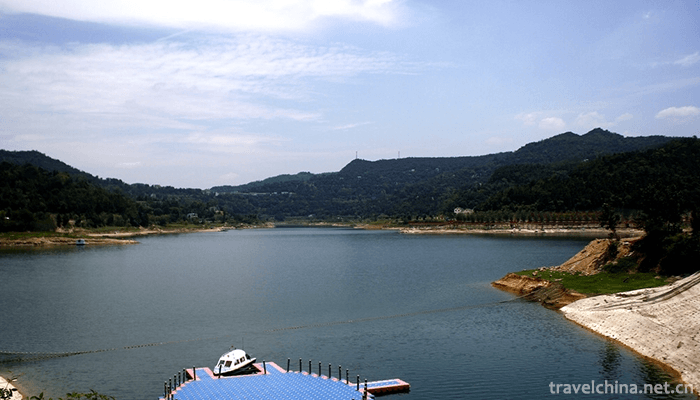
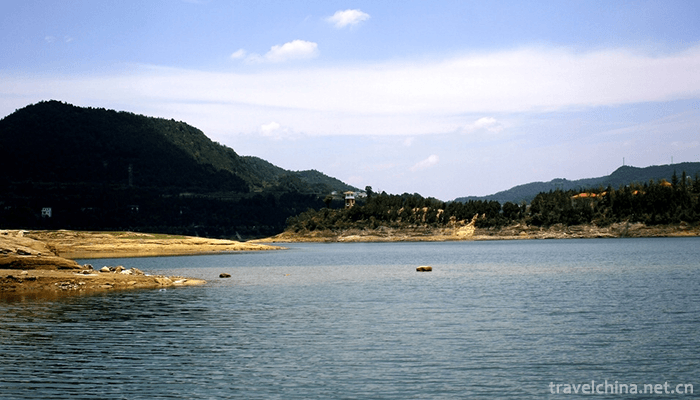
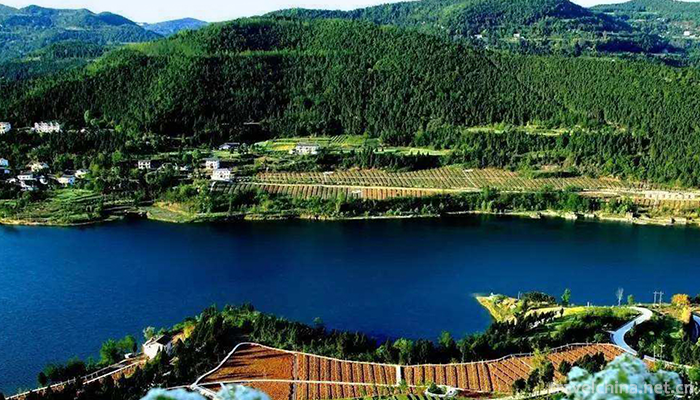
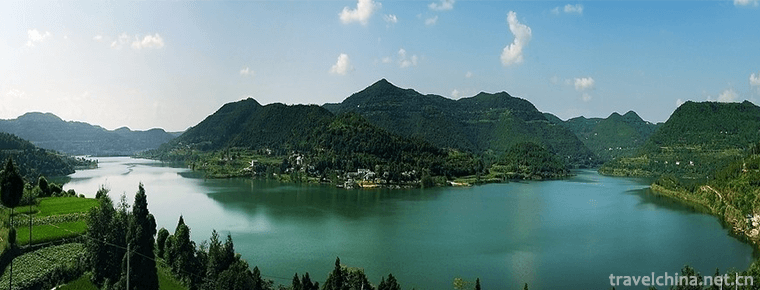
Shengzhong Lake Scenic Area
-
Strange Stones city in China
Located one kilometer north of Feixian Town, Linyi City, Shandong Province, China's largest ornamental stone base, national AAAA scenic spot, Shandong Province's key cultural tourism industry projects
Views: 160 Time 2018-12-22 -
Guanyin Mountain National Forest Park Guangdong
Guanyinshan National Forest Park in Guangdong Province is the first National Forest Park in Dongguan City approved by the State Forestry Administration. It is located in Zhangmu Town, Dongguan City
Views: 127 Time 2019-01-13 -
Golden Peacock Hot Spring Resort
Anhui Jinpeacock Hot Spring Resort is a commercial resort hotel which integrates vacation, fitness, leisure, entertainment, catering and accommodation. It covers an area
Views: 150 Time 2019-01-26 -
Longsheng Hot Spring Resort
Longsheng Hot Spring is located 32 kilometers northeast of Longsheng County. It takes 40 minutes to get to Longsheng Hot Spring by bus from the county town. Hot springs are gushed from rock strata 120
Views: 201 Time 2019-02-06 -
Qingdao Seaside Scenic Spot
Qingdao Seaside Scenic Spot is the first batch of state-level scenic spots announced by the State Council in 1982, and also the first batch of national AAAA-level scenic spots.
Views: 269 Time 2019-02-07 -
Tar Temple Scenic Area
Tar Temple, also known as Taer Temple, was founded in the 10th year of Hongwu Ming Dynasty (1377). Named after the Great Silver Pagoda built in memory of Zongkaba
Views: 180 Time 2019-02-13 -
Wuhou Tomb Scenic Area
The Tomb of Marquis Wu is the tomb of Zhuge Liang, a famous statesman and militarist in the Three Kingdoms Period. It is located at the foot of the ancient battlefield of Dingjunshan
Views: 198 Time 2019-02-24 -
Flower Huaer
"Huaer" is a folk song created and shared by Han, Hui, Tibetan, Dongxiang, Baoan, Sarah, Tu, Yugu and Mongolian nationalities in Gansu, Qinghai and Ningxia provinces in Northwest China.
Views: 139 Time 2019-05-04 -
Lishui drum words
Lishui Drum Ci is a popular rap art in Liandu and its surrounding areas in Lishui City, Zhejiang Province. Lishui Drum Ci originated from the Tang Dynasty. During the reign of Emperor Li Shimin, it wa
Views: 351 Time 2019-05-13 -
Luoyang Peony Festival
The Chinese Luoyang Peony Culture Festival, formerly known as the Luoyang Peony Flower Festival, has been selected into the national intangible cultural heritage list since 1983. In November 2010, it
Views: 125 Time 2019-05-15 -
Zerou
Zerou (Shangyu Zerou), also known as Ashze, is a Tibetan folk dance in Guide County, Qinghai Province. Especially "Shangyu (Chinese: lower row) is soft" is the most important. They often per
Views: 452 Time 2019-07-16 -
guangan medical and health work
As of 2019, there are 3443 health institutions in Guang'an City. Among them, there are 79 hospitals, 174 health centers, 24 community health service centers (stations), 379 clinics, clinics and clinics, 2 blood collection and supply institutions, 7 matern
Views: 339 Time 2020-12-19
